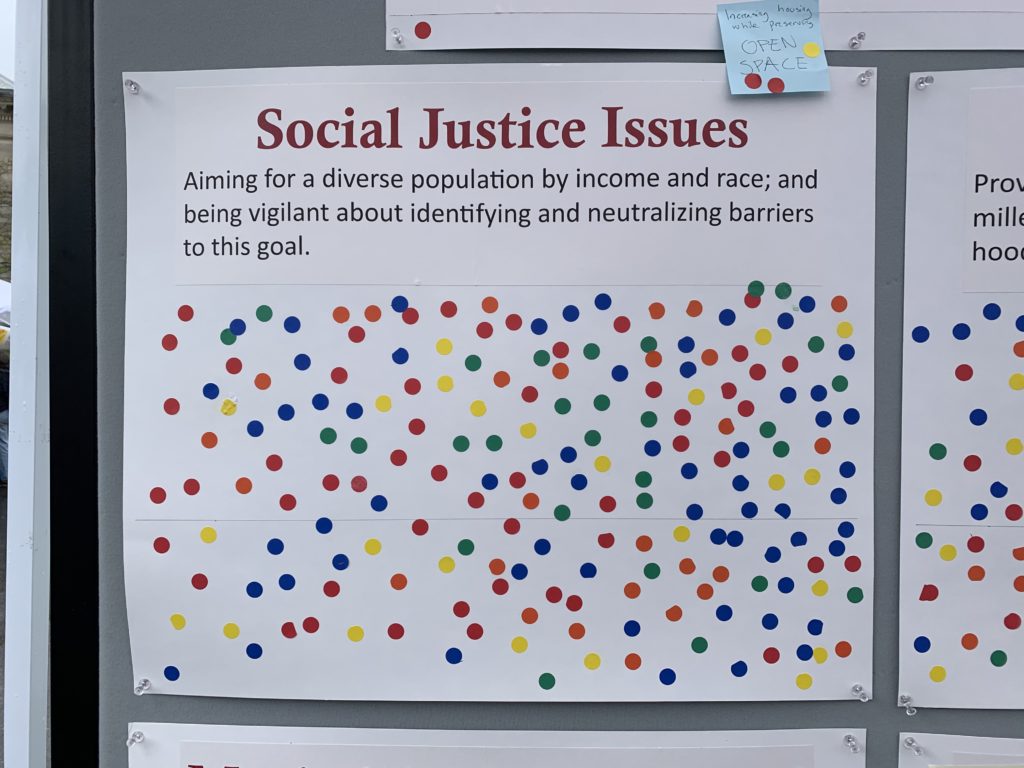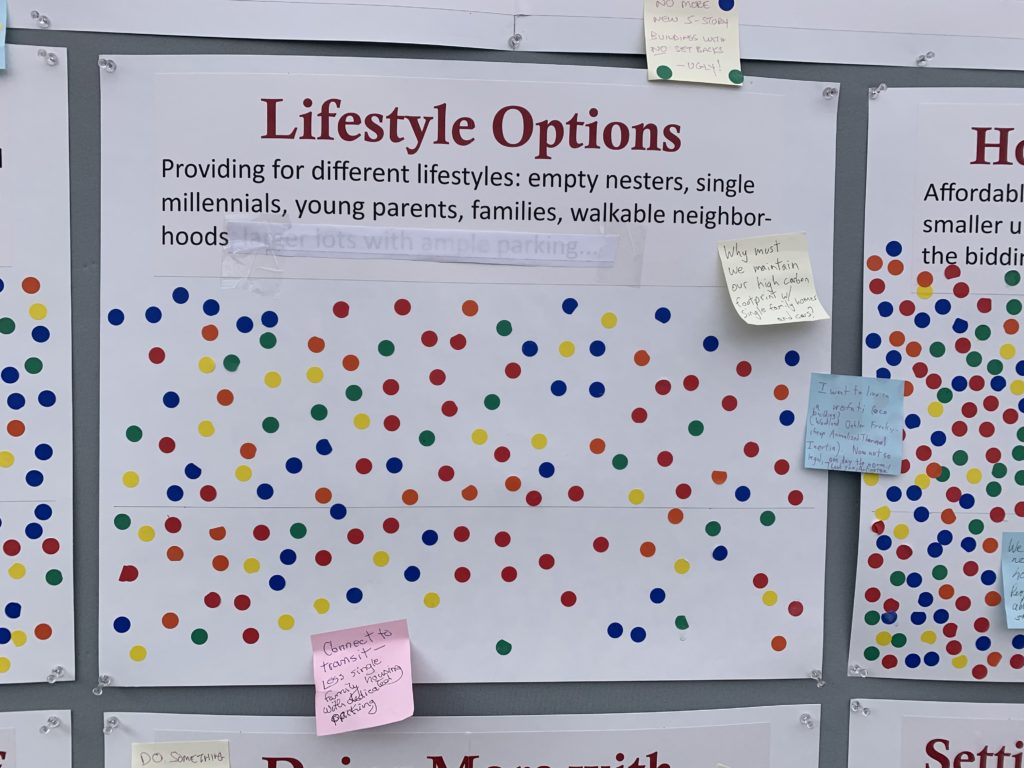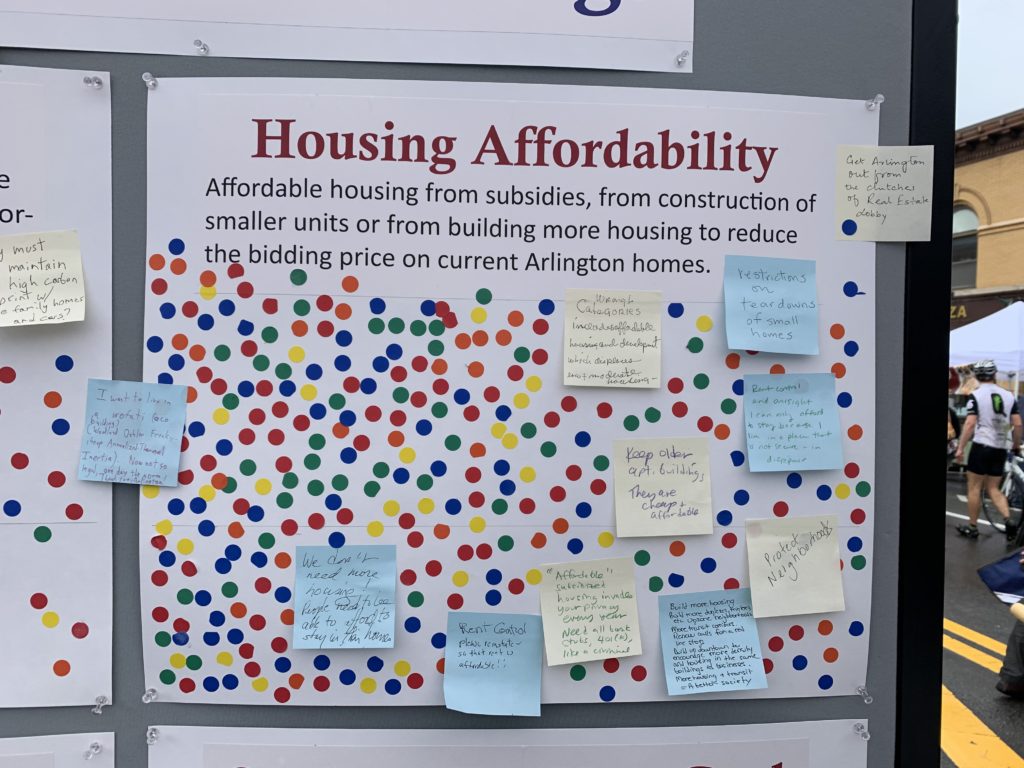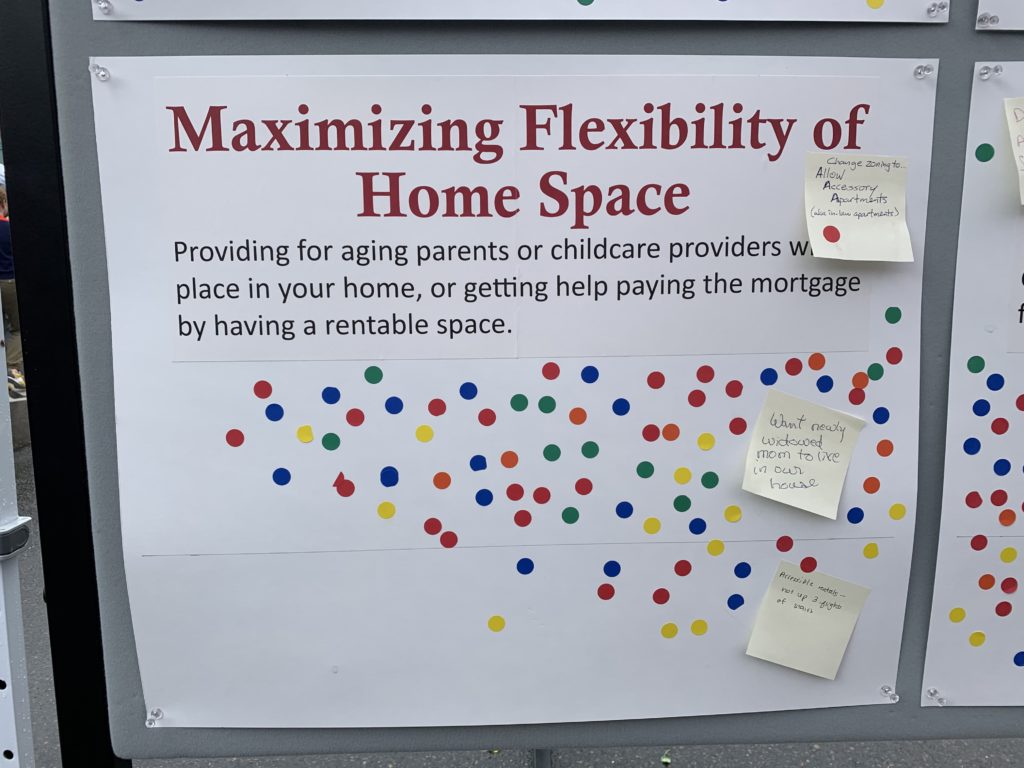Many issues are under discussion as a result of these proposed zoning Articles. Issues include: housing affordability, the diversity of housing and incomes in Arlington, environmental concerns and sustainability, tax burdens or tax savings potentially resulting from growth, the risk of postponing the decisions, and the image of Arlington as a community that values diversity and equitability. This one page “fact sheet” attempts to address many of these issues and concerns.
Related articles
Prepared by: Barbara Thornton with the capable assistance of Alex Bagnall, Pamela Hallett, Patrick Hanlon, Karen Kelleher, Steve Revilak and Jennifer Susse.
As Arlington considers new zoning and other policy decisions to increase the amount of affordable housing in the town, a concern has been raised about the threat of greater costs to the Town’s budget from new people with school age children moving into the town. The concern: additional children in the public schools costs the town more than the additional new property tax revenue the Town collects from the new housing.
This post examines this concern, drawing on data from two recent housing developments, representing 283 units of housing in Arlington, to determine that actually the Town budget gains over 4.5 times the actual cost of paying for the students. According to the most recent 2020 tax bills, the Town expects to collect $1,250,370 in revenue and to spend an additional $269,589 for the new Arlington Public School students living in these developments.
The data suggests that the fear of increased school costs, overwhelming the potential new revenue from new housing construction is not warranted.
For more information, see the full post here.
from Karen Kelleher, Reporter
Interested in new policy developments on housing production in the Greater Boston area? The latest research from Mass Housing Partnership (MHP) is of interest. They just released (Dec. 18, 2019) in interactive map showing relative housing density around every mass transit and commuter rail station in the system, concluding that the region could add 235,000 units if every community allowed density as of right in the area around transit.

CHAPA has legislation pending that would require municipalities served by transit to allow higher density as of right within a certain distance from transit stations. You’ll see that the density around Alewife is not too bad in the context of the entire system.

This is mostly because of very high density in Cambridge near Alewife, but the density of two and three families in East Arlington shows better housing density than the sea of single family zoning around many commuter rail stops.
You can check it out here:https://www.mhp.net/news/2019/todex-research-brief
by Alexander vonHoffman, Joint Center for Housing Studies, Harvard University, February 2006
The case study shows that in the 1970s the Town of Arlington completely abandoned its policy of encouraging development of apartment buildings—and high-rise buildings at that—and adopted requirements that severely constricted the possibilities for developing multifamily dwellings. Although members of the elite introduced the new approach, they were backed by rank-and-file citizens, who took up the cause to protect their neighborhoods from perceived threats.
The report outlines an intentional effort using land use and planning tools like zoning and building approvals, to exclude those with less desirable income or racial characteristics from residing in Arlington. Additional perspectives on Arlington’s exclusionary zoning efforts during this period are reported here.

In a 2019 study, MAPC found that:
- Three out of ten spaces sit empty during peak demand
- The key factors that drive parking demand are parking supply, transit accessibility and the percentage of deed-restricted units
This study raises important questions about the wisdom of continuing to commit large sections of the land area of our municipalities to be on reserve for parking cars. Such extra space could be used to benefit the open space, environmental sustainability and the need for more housing.

The kick-off event for updating Arlington’s Comprehensive Plan (formerly called the Master Plan) is just around the corner on April 3rd from 7-8:30 PM in the Arlington High School Cafeteria!
A Comprehensive Plan is a long-range plan for the Town, and an opportunity for the community to come together and imagine what Arlington could look like in ten or fifteen years. It covers things like housing, business development, parks and open spaces, town services and facilities, and transportation. The kickoff meeting is the first step in building that vision.
Arlington residents of all ages are invited to attend this event, where you can expect a presentation followed by small group discussions. The effort will continue throughout the year, and it’s important to hear from as many residents as possible. Please join if you can!
For more information and to add the meeting to your calendar, see ArlingtonMA.gov/CompPlan.
(DRAFT – 7/11/2019)
Overview

Arlington Planning Department officials report on options for the Town to mitigate the effects of housing demolitions and housing replacements in neighborhoods.
Evidence suggests that lack of appropriate regulatory policies have led to incidences of “mcmansions” and other issues that concern neighborhood residents. This study looks at the data, the policy and regulatory options for Arlington. It also looks at how comparable nearby communities have managed similar circumstances.
This 42 page report covers a great deal of data and analysis of homes by zoning district, gaps in the effectiveness of the current regulatory structure, affects on affordability in Arlington by zoning district, information on housing prices and sales, etc.
“Best practices” include descriptions of demolition delay, expansion of local historic districts, neighborhood conservation districts, design review standards and guidelines and possible revisions to the regulatory framework in Arlington. The report also includes interesting case examples of how comparable communities near Arlington handle these issues.
This report was presented to the Arlington Select Board on July 22.
Read the complete report and see the available data and tables.
A portion of Envision Arlington’s town day booth was designed to spark a community conversation about housing. Envision set up a display with six poster boards, each representing a housing-related topic. Participants were given three dots and asked to place them on the topics they felt were most important. There were also pens and post-it notes on hand to capture additional comments. This post is a summary of the results. You could think of it as a straw-poll or temperature check on the opinions of town day attendees.
Social Justice Issues
Aiming for a diverse population by income and race; and being vigilant about identifying and neutralizing barriers to this goal.

197 dots, plus a post-it note that reads “Increasing housing while preserving open space” (with three dots).
Lifestyle Options
Providing for different lifestyles: empty nesters, single millenials, young parents, families, walkable neighborhoods.

149 dots and four post-it notes:
- No more new 5-story buildings with no setbacks. Ugly. (3 dots)
- Why must we maintain our high carbon footprint with single family homes and cars?
- I want to live in a wofati (eco building) (Woodland Oehler Freak-Cheap Annualized Thermal Intertia). Not so legal, one day the norm. Thank you Arlington.
- Connect to transit. Less single family housing with dedicated parking.
Housing Affordability
Affordable housing from subsidies, from construction of smaller units, or from building more housing to reduce the bidding price on current Arlington homes.

308 dots, with 10 post-it notes
- We don’t need more housing. People need to be able to afford to stay in their homes.
- Get Arlington out from the clutches of real estate lobby. (1 dot)
- Wrong categories. Includes affordable housing and development which displaces low and moderate income housing
- Restrictions on teardowns of small homes
- Keep older apartment buildings. They are cheap and affordable.
- Rent control and oversight. “I can only afford to stay because I live in a place that is not secure and in disrepair.”
- Rent control. Please reinstate so that rent is affordable.
- “Affordable” subsidized housing invades your privacy. Every year need all bank stubs, 401(k), like a criminal.
- Build more housing. Build more duplexes, triplexes, etc. Upzone neighborhoods. More transit corridors. Renew calls for a red line stop. Build up the downtown to encourage more density and housing in the same buildings as businesses. More housing + transit = a better society.
- Protect neighborhoods
This was clearly the topic that drew the most response. Arlington housing is expensive.
Maximizing Flexibility of Home Space
Providing for aging parents or childcare providers with a place in your home or getting help paying the mortgage by having a rentable space.

81 dots, and three post-it notes:
- Change zoning to allow accessory dwelling apartments (aka ADUs, granny flats, in-law apartments) (1 dot)
- Want nearby widowed mom to live in own house.
- Accessible rentals, not up 3 flights of stairs.
Doing more with Existing Resources
Examining current Arlington Housing Authority, Housing Corporation of Arlington, and aging apartment buildings for addressing new housing needs.

143 dots, and five post-it notes:
- Fix transportation infrastructure. Peope can live farther out and still get to work. (4 dots)
- Extend red line to Arlington center and heights. (7 dots)
- None of the above. Keep taxes low. (1 dot)
- Accessible for aging residents. Age in place.
- Do something about empty store fronts.
Setting a ten-year goal for new housing
Determining what Arlington’s housing goals should be, and setting about following through on the necessary zoning and incentives to get what we want.

119 dots, and three sticky notes:
- Why is America low-density? Why is this country slave to the auto? More housing near transit!
- Who is “we”?
- There is too much housing density now. Need business area to attract business.
Observations
As noted earlier, the cost of housing seemed to be the main issue of concern. This is understandable: housing prices in Arlington (and the region in general) have been on an escalator ride up since about 2000 or so. That’s led to our current high cost of housing, and also to a form of gradual gentrification. When housing is more expensive than it was last year, a new resident in town has to make more money (or be willing to spend more on housing) than last year’s new resident.
I see at least two broad responses to this: one is to keep the status quo, perhaps returning to the inexpensive housing of decades past. The other is for more multi-family housing, and more transit-oriented development. It will be interesting to see how these dynamics play out in the future.
There’s also recognition of the importance of older “naturally affordable” apartment buildings. Arlington was very pro-growth in the 1950s and 1960s; that’s fortunate, because it allowed these apartments to be built in the first place. On the downside, we haven’t done a good job of allowing new construction into the pipeline during recent decades. Buildings depreciate, so a new building is worth more than one that’s ten years old, which is worth more than one that’s twenty years old, and so on. At some point, the old apartments are likely to be refurbished/upgraded, and they’ll become more expensive as a result.
This is only the beginning of the conversation, but at least we’re getting it going.
This timely report on the question of affordable housing vs. density comes from the California Dept. of Housing & Community Development and mirrors the situation in the region surrounding Arlington MA.
Housing production has not kept up with job and household growth. The location and type of new housing does not meet the needs of many new house- holds. As a result, only one in five households can afford a typical home, overcrowding doubled in the 1990’s, and too many households pay more than they can afford for their housing.
Myth #1
High-density housing is affordable housing; affordable
housing is high-density housing.
Fact #1
Not all high density housing is affordable to low-income families.
Myth #2
High-density and affordable housing will cause too much traffic.
Fact #2
People who live in affordable housing own fewer cars and
drive less.
Myth #3
High-density development strains public services and
infrastructure.
Fact #3
Compact development offers greater efficiency in use of
public services and infrastructure.
Myth #4
People who live in high-density and affordable housing
won’t fit into my neighborhood.
Fact #4
People who need affordable housing already live and work
in your community.
Myth #5
Affordable housing reduces property values.
Fact #5
No study in California has ever shown that affordable
housing developments reduce property values.
Myth #6
Residents of affordable housing move too often to be stable
community members.
Fact #6
When rents are guaranteed to remain stable, tenants
move less often.
Myth #7
High-density and affordable housing undermine community
character.
Fact #7
New affordable and high-density housing can always be
designed to fit into existing communities.
Myth #8
High-density and affordable housing increase crime.
Fact #8
The design and use of public spaces has a far more
significant affect on crime than density or income levels.
See an example of a “case study” of two affordable housing developments in Irvine CA, San Marcos at 64 units per acre.

San Paulo at 25 units per acre.

Both are designed to blend with nearby homes.


